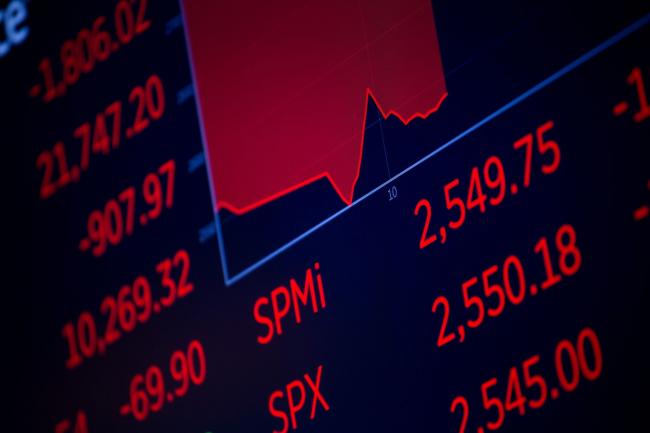This post was originally published on this site
https://i-invdn-com.akamaized.net/content/pic89197fe822dedd42b2d9d48dd0c4ca96.jpg
(Bloomberg) — U.S. stocks pared gains as investors sought more information on how governments and central banks would protect the global economy from the coronavirus fallout.
The S&P 500 was about 1.5% higher mid-morning after climbing 6% at the open, following stocks’ worst day since 1987. Treasury yields increased as the Federal Reserve said it was buying $37 billion of bonds across maturities and President Donald Trump planned to declare a national emergency.
European equities also advanced, the dollar strengthened and stress in the credit markets showed some signs of easing. Precious metals fell, with palladium set for its worst week on record.
After days of no or inadequate action, policy prescriptions came fast Friday but it was unclear if they would be enough. Congress was said to be near a deal on a relief bill. The European Union prepared to suspend government spending rules, and regulators in Italy and Spain banned short-selling on some stocks. China’s central bank said it would pump in $79 billion to bolster the economy.
The moves buoyed market sentiment battered by the spread of the virus and a spate of travel restrictions, school closings and event cancellations. But bears cautioned that the rebound was preordained and may not stick.
After each of the 10 worst days in S&P 500 history, the average return has been a gain of 2.94%. The Cboe Volatility Index dropped after its fourth-highest close on record. Such spikes in the have always been followed by sharp rallies.
Other markets remained exceptionally volatile. Ten-year Treasuries swung from earlier gains to losses. Sovereign bonds sank across most of Europe for a second day amid criticism of European Central Bank measures to address the pandemic. Oil pushed higher and the dollar headed for its best week since 2016.
“It’s possible we’re just recovering a portion of yesterday’s losses on the idea that there were no terrible headlines this morning,” said Susquehanna Financial Group strategist Christopher Jacobsen. “The market had priced in the extreme dour outcome and the lack of newsflow this morning to confirm that worst-case scenario resulted in just a bit of a relief rally.”
Even with Friday’s gains, global equities are heading for their worst week since 2008 as investors price in a severely weaker economic outlook as cases continue to grow across the world and restrictions on people and businesses crush sentiment. The Bank of Japan on Friday followed an earlier move from the Federal Reserve to inject liquidity.
“It seems that the more severe things become in the short term, the more extreme will be the fiscal and monetary policy response,” Mark Dowding, chief investment officer at BlueBay Asset Management, wrote to investors. “It is very conceivable that the full boost from such measures will only really kick in just as activity rebounds, with pent up demand leading to a turbo-charged recovery in the second half of the year in the wake of an economic contraction in the context of the first half.”
These are the main moves in markets:
Stocks
- The S&P 500 Index climbed 1.4% as of 11:35 a.m. in New York.
- The Index added 1%.
- The MSCI Asia Pacific Index dipped 2.1%.
- The MSCI All-Country World Index climbed 1.7%.
Currencies
- The Bloomberg Dollar Spot Index increased 0.7%.
- The euro decreased 0.6% to $1.1113.
- The Japanese yen weakened 2.3% to 107.10 per dollar.
- The Mexican peso strengthened 0.5% to 21.84 per dollar.
Bonds
- The yield on 10-year Treasuries rose 10 basis points to 0.90%.
- Germany’s 10-year yield jumped 16 basis points to -0.59%.
Commodities
- West Texas Intermediate crude rose 2.4% to $32.25 a barrel.
- Gold fell 0.7% to $1,564.66 an ounce.
Fusion Media or anyone involved with Fusion Media will not accept any liability for loss or damage as a result of reliance on the information including data, quotes, charts and buy/sell signals contained within this website. Please be fully informed regarding the risks and costs associated with trading the financial markets, it is one of the riskiest investment forms possible.


